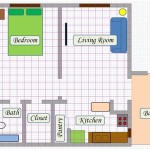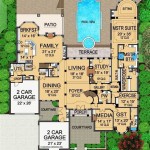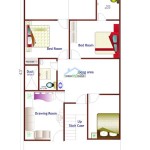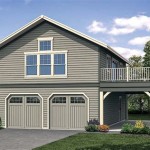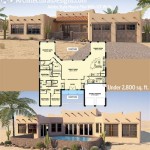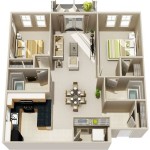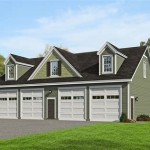Narrow Sloping Lot House Plans: Maximizing Space and Potential
Building a home on a narrow, sloping lot presents unique challenges. However, with careful planning and innovative design, these seemingly difficult terrains can be transformed into stunning and functional living spaces. Narrow sloping lot house plans require a different approach compared to traditional flat properties, focusing on verticality, efficient space utilization, and seamless integration with the natural landscape. Understanding the specific considerations and design principles is crucial for success.
The limitations of a narrow lot often dictate the overall form and footprint of the house. Sloping terrain adds another layer of complexity, requiring careful consideration of excavation, foundation design, drainage, and retaining walls. Overcoming these obstacles demands a strategic design process that maximizes habitable space, minimizes site disturbance, and provides aesthetically pleasing solutions. The goal is to create a home that feels spacious, comfortable, and connected to its surroundings, despite the constraints of the plot.
Understanding the Challenges and Opportunities
Narrow sloping lots present several interwoven challenges. The limited width necessitates a vertical design approach, often involving multiple stories. The slope introduces the need for customized foundation solutions, which can significantly impact construction costs. Drainage becomes a critical concern, as water runoff needs to be managed effectively to prevent erosion and potential damage to the structure. Furthermore, access to the site for construction equipment and materials can be restricted, requiring careful logistical planning.
Despite these challenges, narrow sloping lots also offer unique opportunities. The slope can be leveraged to create interesting architectural features, such as walk-out basements with direct access to the yard, multi-level decks with panoramic views, and terraced gardens that cascade down the hillside. The vertical design can also provide opportunities for maximizing natural light and ventilation, creating bright and airy interiors. Moreover, a well-designed home on a sloping lot can stand out aesthetically, showcasing creativity and innovation in response to site-specific conditions.
Before embarking on the design process, a thorough site analysis is essential. This includes assessing the slope angle, soil conditions, drainage patterns, existing vegetation, and any potential geological hazards. Understanding local building codes and regulations is equally important, as they may impose restrictions on building height, setbacks, or excavation. This comprehensive understanding of the site's characteristics and regulatory constraints will inform the design decisions and ensure a smooth construction process.
Key Design Considerations for Narrow Sloping Lots
Several key design considerations are paramount when developing house plans for narrow sloping lots. These considerations focus on optimizing space, mitigating the impact of the slope, and ensuring structural stability. Attention to these aspects will contribute to a successful and sustainable build.
Foundation Design: The foundation is arguably the most critical element of a house built on a sloping lot. Traditional slab-on-grade foundations are rarely suitable in these situations. Instead, options such as pier and beam foundations, stepped foundations, or full basement foundations are more common. Pier and beam foundations involve raising the house on concrete or steel posts, allowing for ventilation and access beneath the structure. Stepped foundations follow the contour of the slope, creating different levels within the foundation. Full basement foundations provide additional living space and can act as a retaining wall to stabilize the hillside. The choice of foundation type will depend on the degree of the slope, soil conditions, and the desired functionality of the basement area.
Vertical Design and Space Optimization: Given the limited width of the lot, maximizing vertical space is essential. Multi-story designs are common, allowing for ample living area without expanding the footprint. Open floor plans can create a sense of spaciousness and improve natural light penetration. Strategic placement of windows and skylights can further enhance the feeling of openness and connect the interior with the surrounding landscape. Built-in storage solutions and efficient use of every nook and cranny are crucial for maximizing usable space. Consider incorporating features like loft spaces, under-stair storage, and multi-functional furniture to optimize every square foot.
Integration with the Landscape: A well-designed house on a sloping lot should seamlessly integrate with the surrounding landscape. This involves minimizing site disturbance during construction and incorporating natural elements into the design. Retaining walls can be used to create level areas for gardens, patios, or outdoor living spaces. Terracing the landscape can not only prevent erosion but also add visual interest and create different levels of outdoor enjoyment. Native plants should be used in landscaping to blend the house into its environment and minimize the need for extensive irrigation. Consider incorporating green roofs or vertical gardens to further enhance the connection with nature.
Drainage and Erosion Control: Effective drainage is critical for preventing water damage and erosion on sloping lots. A comprehensive drainage plan should be developed to manage surface runoff and groundwater. This may involve installing French drains, swales, or retention ponds. Gutters and downspouts should be properly sized and positioned to direct water away from the foundation. Retaining walls should be designed with weep holes to allow water to escape. Erosion control measures, such as silt fences and erosion blankets, should be implemented during construction to prevent soil loss.
Exploring Different House Plan Styles
While the specific architectural style of a house on a narrow sloping lot can vary widely based on personal preferences and regional influences, some styles lend themselves particularly well to these types of sites. These styles often incorporate elements that address the challenges and opportunities presented by the sloping terrain.
Modern/Contemporary Designs: Modern and contemporary house plans often embrace clean lines, minimalist aesthetics, and large windows. These designs can be easily adapted to sloping lots, utilizing tiered levels, cantilevered structures, and expansive glazing to capture views and maximize natural light. The use of sustainable materials and energy-efficient technologies is also common in modern designs.
Hillside Homes: Hillside homes are specifically designed to seamlessly integrate with sloping terrain. These homes typically feature multiple levels that follow the natural contours of the land. Walk-out basements are common, providing direct access to the yard. Hillside homes often incorporate large decks and balconies to take advantage of the views. The design emphasizes a strong connection between the interior and exterior spaces.
Craftsman Style: While traditionally associated with flat lots, the Craftsman style can be adapted to sloping sites with careful planning. Features such as gabled roofs, deep eaves, and exposed rafter tails can add character to the design. The use of natural materials, such as wood and stone, can help the house blend in with its surroundings. Stepped foundations and terraced landscaping can be incorporated to address the slope.
Scandinavian Designs: Scandinavian house plans often prioritize simplicity, functionality, and natural light. These designs typically feature clean lines, minimalist interiors, and large windows. The use of light-colored materials and open floor plans can create a sense of spaciousness. Scandinavian designs often incorporate sustainable elements, such as solar panels and efficient insulation.
Ultimately, the choice of house plan style will depend on the individual homeowner's preferences and the specific characteristics of the site. However, regardless of the style chosen, careful attention to the design considerations outlined above is essential for creating a successful and sustainable home on a narrow sloping lot.
Navigating the complexities of building on a narrow sloping lot can be overwhelming, but with careful planning, informed decision-making, and the right design professionals, it is possible to create a beautiful and functional home that maximizes the potential of the site. The challenges inherent in these types of properties demand innovative solutions, but the rewards can be significant, resulting in a unique and aesthetically pleasing living space that is perfectly tailored to its environment.

Contemporary House Plan For The Up Sloping Lot

A Guide To Sloping Lot House Plans

The Best House Plans For Sloped Lots And Narrow Houseplans Blog Com

Plan Kd 3287 2 3 Two Story Bed House For Narrow Sloping Lot

The Best House Plans For Sloped Lots And Narrow Houseplans Blog Com

House Plans For A Sloped Lot Dfd Blog

Modern House Plan For A Sloping Lot 85184ms Architectural Designs Plans

Sloped Lot House Plans Down Slope The Designers

Affordable Home Plan Ch59

The Best House Plans For Sloped Lots And Narrow

